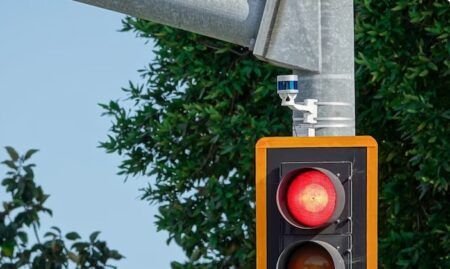The Government of South Australian is trialling the country’s first, intersection warning systems at four key rural locations that will trigger safety measures when vehicles are detected approaching road junctions.
The Rural Intersection Active Warning System (RIAWS) is able to reduce the speed limit displayed on roadside variable message signs (VMS) when it detects vehicles approaching an intersection. The innovative technology was originally developed in Sweden, and is currently in use in New Zealand where, together with static safety signs that warn drivers to slow down or alert them to intersections ahead, the technology has been found to slow vehicles by as much as 12.5mph (20km/h). New Zealand-based company Armitage Group has been the systems integrator and developer of the RIAWS for the country’s Transport Agency (NZTA).
One of the first locations to receive the technology will be a T-junction at the intersection of Bakers Gully and McLaren Flat roads in Kangarilla, where a fatal crash occurred in 2015. The other intersections where the technology will be tested are at Paris Creek, Cudlee Creek, and Stanley Flat. The RIAWS technology detects a vehicle on the minor road approaching the intersection, and then lowers the speed limit on the major rural road by changing the electronic speed limit sign.
“Our state government is continually investing to keep improving South Australia’s arterial road network with state-of-the-art technology, known as intelligent transport systems,” explained South Australia’s Transport and Infrastructure Minister, Stephen Mullighan.
“Together with recent infrastructure upgrades to this Kangarilla intersection, this warning system will play a vital role in improving safety for all road users by warning of an approaching junction and reducing vehicles’ speeds. Research shows that impact of road trauma can be substantially reduced with every reduction in vehicle speed.”
Mulligan continued, “The government has already committed to improving signage, line marking and sight lines at this intersection, with these minor works scheduled to be completed before June. Rather than further costly upgrades such as a roundabout, or introducing permanent speed reductions, this warning system is a comparatively low-cost initiative which will have substantial safety benefits.
“South Australia is a national leader in adopting new and innovative transport technologies, which enable our advanced Traffic Management Centre to responsively monitor and adjust our state traffic network 24 hours a day, 7 days a week.”
(Photo credit: Armitage Group)




